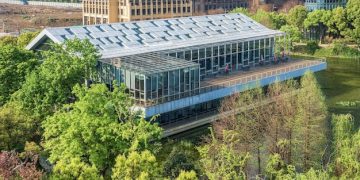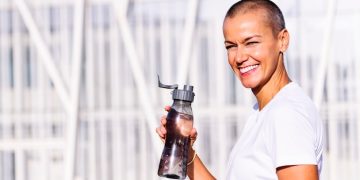The Tiny House Movement: Financial Freedom Through Downsizing?

The Tiny House Movement: Is Downsizing the Key to Financial Freedom? explores how embracing a smaller living space can significantly reduce expenses, allowing individuals to pursue financial independence and a more sustainable lifestyle.
Is the American Dream—a big house, a sprawling lawn, and a two-car garage—fading away? More and more people are asking if maybe a simpler, smaller life is the real key to happiness and financial independence. The Tiny House Movement: Is Downsizing the Key to Financial Freedom?, it just might be.
Understanding the Tiny House Movement
The tiny house movement is more than just a fad; it’s a lifestyle choice that challenges conventional notions of homeownership and the accumulation of material possessions. It’s about intentional living and making conscious decisions about resources and space.
At its core, the tiny house movement promotes the idea of living simply and sustainably. By reducing the size of their living space, individuals can minimize their environmental footprint and live a more eco-friendly lifestyle.
The Roots of the Movement
The tiny house movement has roots in the back-to-the-land movement of the 1960s and ’70s, which emphasized self-sufficiency and a return to nature. However, the modern movement gained momentum in the late 1990s, partly in response to the increasing cost of housing and the desire for a more sustainable way of life.
What Defines a Tiny House?
While there is no universally accepted definition, a tiny house is generally considered to be a dwelling under 400 square feet. These homes can be built on wheels (as trailers) or on a permanent foundation. They often incorporate innovative design and space-saving solutions to maximize functionality within a small footprint.

Advantages of downsizing to a smaller living space:
- Reduced environmental footprint.
- Lower energy consumption.
- Minimalism and intentional living.
The tiny house movement is a cultural and architectural phenomenon that gained significant traction in recent years. The idea behind it is simple – living in a small, often mobile, home that is typically under 400 square feet. The movement emphasizes financial prudence, environmental responsibility, and a desire for a simpler, less materialistic lifestyle. As housing costs continue to rise and environmental concerns become more pressing, the tiny house movement has resonated with individuals seeking alternative ways to live.
Financial Benefits of Tiny House Living
One of the most compelling reasons people embrace the tiny house movement is the potential for significant financial savings. By downsizing, individuals can reduce or eliminate mortgage payments, property taxes, and utility bills.
The financial benefits extend beyond just the initial cost savings. Tiny house dwellers often find themselves spending less on consumer goods, as they have limited space to store them. This can lead to a greater sense of financial freedom and the ability to pursue other goals.
Lower Housing Costs
The cost of building or buying a tiny house is typically much lower than that of a traditional home. This can allow individuals to avoid taking out a large mortgage, freeing up their income for other investments or pursuits.
Reduced Utility Bills
Tiny houses require less energy to heat and cool, resulting in lower utility bills. Many tiny house dwellers also incorporate sustainable features, such as solar panels and composting toilets, which can further reduce their environmental impact and save money.
- Mortgage elimination or reduction
- Lower property taxes
- Smaller utility bills
Many tiny house residents report a marked improvement in their overall financial well-being. For many, this means having extra funds available to travel, invest, or retire early.
Potential Challenges
Of course, achieving financial freedom through tiny house living isn’t always a straightforward path. Challenges such as zoning restrictions, financing options, and finding suitable land can present obstacles. Nevertheless, with careful planning and resourcefulness, these challenges can be overcome.
Exploring the Environmental Impact
Beyond financial benefits, the tiny house movement also offers a compelling solution to environmental concerns. Smaller homes inherently consume fewer resources and generate less waste, contributing to a lower overall environmental footprint.
Many tiny house dwellers are also committed to sustainable building practices, using recycled materials and energy-efficient appliances. This can further minimize the environmental impact of their homes.
Eco-Friendly Construction
Tiny houses are often built using sustainable materials, such as reclaimed wood, bamboo, and recycled metal. This reduces the demand for new resources and helps to divert waste from landfills.
Energy Efficiency
Tiny houses are typically designed to be energy-efficient, with features such as passive solar heating, efficient insulation, and low-energy appliances. This can significantly reduce energy consumption and carbon emissions.

- Smaller footprint
- Lower resource consumption
- Promotion of sustainable lifestyles
The environmental benefits of tiny houses are substantial. These homes encourage recycling, composting, and gardening, all of which contribute to a more sustainable lifestyle. Residents are often more mindful of their consumption habits and actively seek out ways to reduce their impact.
Zoning Restrictions
Despite the lower environmental impact, zoning restrictions can create challenges. Many areas have minimum size requirements for homes, making it difficult to legally build and live in a tiny house. However, advocacy efforts are underway to change these regulations and make tiny house living more accessible.
Simplifying Life and Reducing Clutter
The tiny house movement isn’t just about saving money and reducing environmental impact; it’s also about simplifying life and decluttering. By living in a smaller space, individuals are forced to prioritize their possessions and let go of things they don’t need.
This can lead to a greater sense of freedom and contentment. With fewer possessions to worry about, individuals can focus on experiences and relationships, rather than material accumulation.
The Benefits of Minimalism
Minimalism is a key principle of the tiny house movement. By embracing minimalism, individuals can reduce stress, improve their mental well-being, and create more time for the things that truly matter to them.
Mindful Consumption
Tiny house dwellers are often more mindful of their consumption habits, carefully considering each purchase before bringing it into their homes. This can lead to a more sustainable and ethical lifestyle.
- Less stress
- More time for experiences
- Better mental well-being
The benefits of simplification are profound, offering a path to reduce stress and increase overall happiness and peace of mind.
Coping with Limited Space
Of course, living in a tiny house also presents challenges. It requires creativity, resourcefulness, and a willingness to adapt to limited space. However, many tiny house dwellers find that these challenges are ultimately rewarding.
Navigating Challenges and Legalities
While the tiny house movement offers many potential benefits, it’s important to be aware of the challenges and legal considerations involved. Zoning restrictions, building codes, and financing options can all present obstacles to tiny house living.
It’s essential to research local regulations and be prepared to advocate for changes if necessary. With careful planning and persistence, these challenges can be overcome.
Zoning Regulations
Many areas have zoning regulations that restrict the size and type of dwellings that can be built. It’s important to research local zoning laws and ensure that your tiny house meets all requirements.
Building Codes
Building codes are designed to ensure the safety and quality of construction. Tiny houses must comply with all applicable building codes, which can vary depending on the location.
- Zoning
- Building codes
- Financing
Although zoning can present challenges, there is a growing momentum toward more acceptance. Many communities are beginning to recognize the benefits of tiny houses as an affordable and sustainable housing option.
Financing Options
Securing financing for a tiny house can be challenging, as traditional lenders may be hesitant to provide mortgages for such small dwellings. However, there are alternative financing options available, such as personal loans, RV loans, and crowdfunding.
Is Tiny House Living Right for You?
The tiny house movement offers a compelling vision of financial freedom, environmental sustainability, and simplified living. However, it’s not for everyone. It requires a willingness to embrace minimalism, adapt to limited space, and navigate legal and logistical challenges.
Before embarking on a tiny house journey, it’s essential to carefully consider your values, priorities, and lifestyle. If you’re willing to embrace the challenges and embrace a simpler way of life, tiny house living may be the key to unlocking your financial freedom and creating a more fulfilling life.
Self-Assessment Questions
Before taking the plunge into tiny house living, it’s important to ask yourself some honest questions. Are you comfortable living in a small space? Are you willing to let go of unnecessary possessions? Are you prepared to navigate legal and logistical challenges?
Research and Planning
Thorough research and planning are essential for a successful tiny house journey. Research local zoning laws, building codes, and financing options. Visit tiny house communities and talk to people who are already living the tiny house lifestyle.
- Assess your values and priorities
- Do thorough research
- Visit tiny house communities
Tiny houses can offer a practical and effective path to a more sustainable and financially independent lifestyle. The journey requires careful consideration and planning, but it can be exceptionally rewarding.
Community Resources
There are many communities and online resources available to support individuals interested in tiny house living. These resources can provide valuable information, advice, and support as you embark on your tiny house journey.
| Key Point | Brief Description |
|---|---|
| 🏠 Financial Savings | Reduced housing costs and utility bills. |
| 🌍 Eco-Friendly Living | Lower environmental impact through sustainable materials. |
| ✨ Simplified Life | Reduced clutter and more focus on experiences. |
| ⚖️ Legal Challenges | Navigating zoning and building codes. |
Frequently Asked Questions (FAQ)
▼
The Tiny House Movement encourages living in small, efficient homes, typically under 400 square feet, to reduce expenses and environmental impact while promoting a simpler lifestyle.
▼
By lowering housing costs, reducing utility bills, and minimizing the need for excessive possessions, tiny house living can free up income for investments or early retirement.
▼
Yes, many areas have minimum size requirements that can affect tiny houses. Researching local regulations is essential before building or moving into a tiny home.
▼
Tiny houses often use sustainable materials, require less energy, and encourage minimalist living, reducing overall resource consumption and carbon emissions.
▼
It requires adjustment and resourcefulness due to limited space and potential legal hurdles. However, many find the benefits of financial freedom and simplicity to be well worth the effort.
Conclusion
The tiny house movement presents a compelling alternative to traditional, expansive living. While it may not suit everyone, it offers a tangible pathway to financial independence, a reduced environmental footprint, and a simpler, more intentional lifestyle. Thorough research and careful planning are crucial, but for those ready to embrace the challenge, the rewards can be significant.





